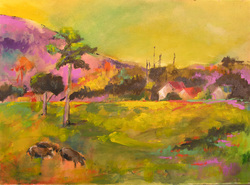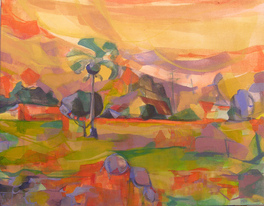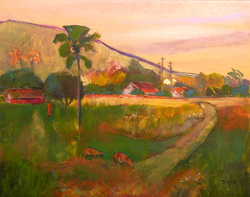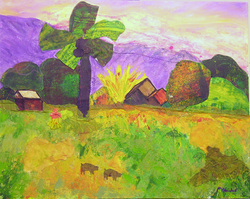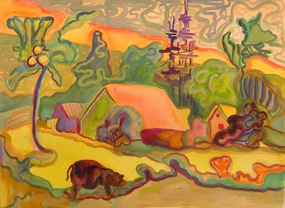Haere Mai (1891)
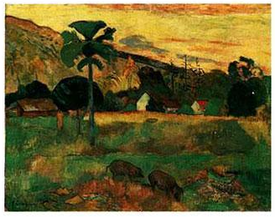
Paul Gauguin, 1848-1903
Oil on Burlap, 36"x28.5", Solomon R. Guggenheim Museum, New York Gauguin was instrumental in the promotion of "primitivism" as an art movement at the end of the 19th century. It was motivated by the romantic desire to discover an unsullied paradise hidden within the “uncivilized” world. It is believed that Haere Mai, which means literally "come here" and is painted into the lower right of the painting, is actually the result of Gauguin not understanding the Tahitian language and a desire to make the painting more saleable to the Parisian art buying public who were craving intimations of exotic far away places.
Oil on Burlap, 36"x28.5", Solomon R. Guggenheim Museum, New York Gauguin was instrumental in the promotion of "primitivism" as an art movement at the end of the 19th century. It was motivated by the romantic desire to discover an unsullied paradise hidden within the “uncivilized” world. It is believed that Haere Mai, which means literally "come here" and is painted into the lower right of the painting, is actually the result of Gauguin not understanding the Tahitian language and a desire to make the painting more saleable to the Parisian art buying public who were craving intimations of exotic far away places.

